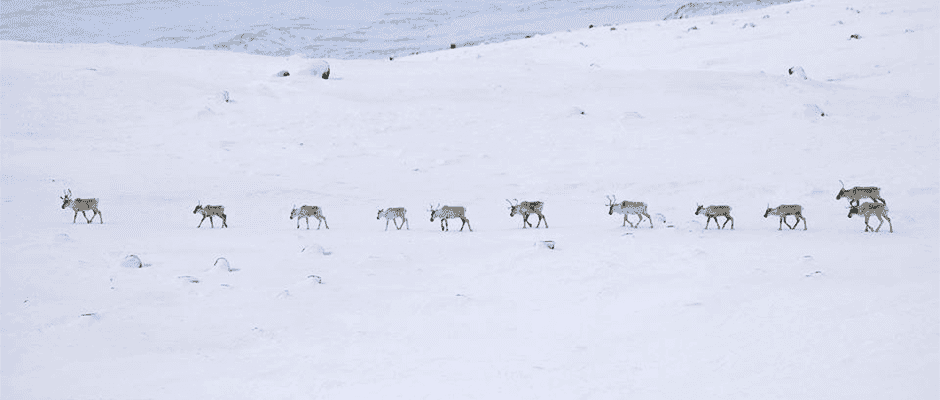Share this article
JWM: Torngat caribou herd on the decline
Reports from hunters and Inuit groups in northern Quebec-Labrador suggested the Torngat caribou (Rangifer tarandus) herd was declining, but researchers didn’t know to what extent and why.
For a study published in the Journal of Wildlife Management, Édouard Bélanger, a former master’s student at Université Laval and now a wildlife biologist with the Gwich’in Renewable Resources Board, led the first research team to study the herd survival and habitat use since the 1990s. The team found a low survival rate of adult females, partly due to subsistence harvest and predation.
“The Torngat Mountains herd could continue to decrease,” they wrote, “if no management actions were taken to increase adult female survival.”
The Torngat herd is classified by the Canadian government as a “designatable unit” with characteristics that make it distinct from other caribou, Bélanger said. They are mountain caribou that don’t make large migrations, but instead make small migrations between their winter range and where female bear their calves.
His team collared 25 adult female caribou and 10 adult males between 2011 and 2016 to determine their seasonal habitat selection, survival and space use. “The ultimate goal is to provide information to make decisions on management of that population,” he said.
Bélanger and his colleagues first looked at habitat selection and found that in all seasons, the herd selected areas based on available food resources, rather than on predation risk. This was particularly true during winter, they found. In the summer, insect avoidance also influenced habitat selection. “Insects could harass caribou quite a bit,” Bélanger said. “This has an impact on body condition.”
Even during calving season, when other caribou often seek higher elevations to avoid predators, the Torngat herd didn’t. “We didn’t find any evidence that females select high elevation in their calving,” Bélanger said. “We were taken aback by that.”
The team also looked at spatial overlap with the Rivière‐George caribou herd and found that much less overlap is happening compared with the ’90s and 2000s. That’s largely due to the shrinking of the Rivière‐George herd, Bélanger said. The herd has declined from around 770,000 animals to only 5,500, probably leaving more Torngat caribou vulnerable to wolves that come into the area.
Helping the herd is the fact that its distribution is in national parks and protected areas. “That’s good news on that side,” Bélanger said. He said the next step is for researchers to look more into predation.
But while scientific research is important, Bélanger said, the research wouldn’t have been successful without traditional knowledge. “We based a lot of our hypothesis on traditional knowledge, so a lot of the credit goes to those community members,” he said.
TWS members can log in to read this paper in the Journal of Wildlife Management.
Header Image: Researchers found subsistence hunting and predation are the key factors driving the Torngat Mountain caribou herd declines. ©David Borish








